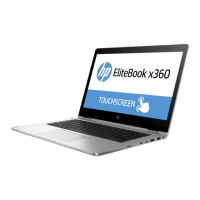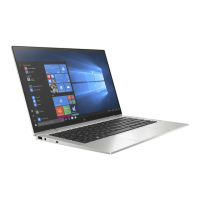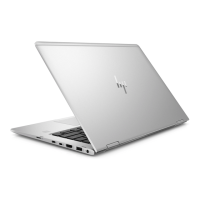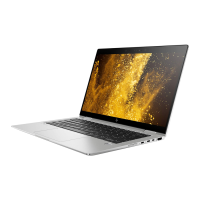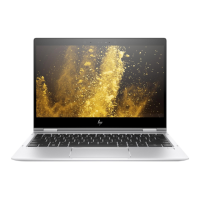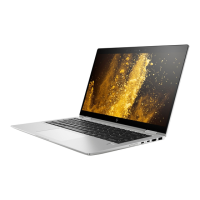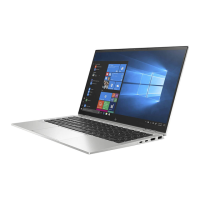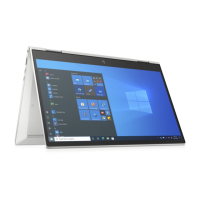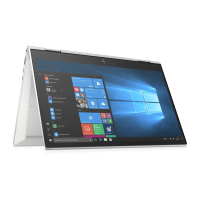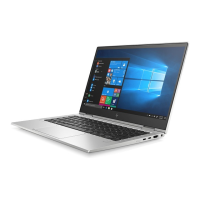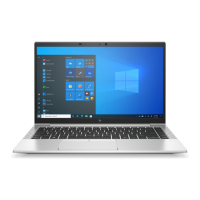Right side
Component Description
(1) microSD memory card reader Reads optional memory cards that store, manage, share or
access information.
To insert a card:
1. Hold the card label-side up, with the connectors facing
the computer.
2. Inser the card into the memory card reader, and then press
in on the card until it is rmly seated.
To remove a card;
▲
Press in on the card, and then remove it from the memory
card reader.
(2) USB Type-C Thunderbolt port Connects and charges a USB device that has a Type-C connector,
such as a cell phone, camera, activity tracker, or smartwatch, and
provides high-speed data transfer.
– or –
Connects a display device that has a USB Type-C connector,
providing display output.
NOTE: The computer may also support a Thunderbolt
docking station.
(3) Security cable slot Attaches an optional security cable to the computer.
NOTE: The security cable is designed to act as a deterrent, but it
may not prevent the computer from being mishandled or stolen.
(4) HDMI port Connects an optional video or audio device, such as a high-
denition television, any compatible digital or audio component,
or a HDMI device.
(5) USB 3.x charging port When the computer is on, connects and charges a USB device,
such as a cell phone, camera, activity tracker, or smartwatch, and
provides high-speed data transfer.
(6) Battery light When AC power is connected:
●
White: The battery charge is greater than 90 percent.
●
Amber: The battery charge is from 0 to 90 percent.
●
O: The battery is not charging.
When AC power is disconnected (battery not charging):
●
Blinking amber: The battery has reached a low battery level.
When the battery has reached a critical battery level, the
battery light begins blinking rapidly.
12 Chapter 2 External component identication
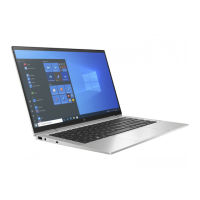
